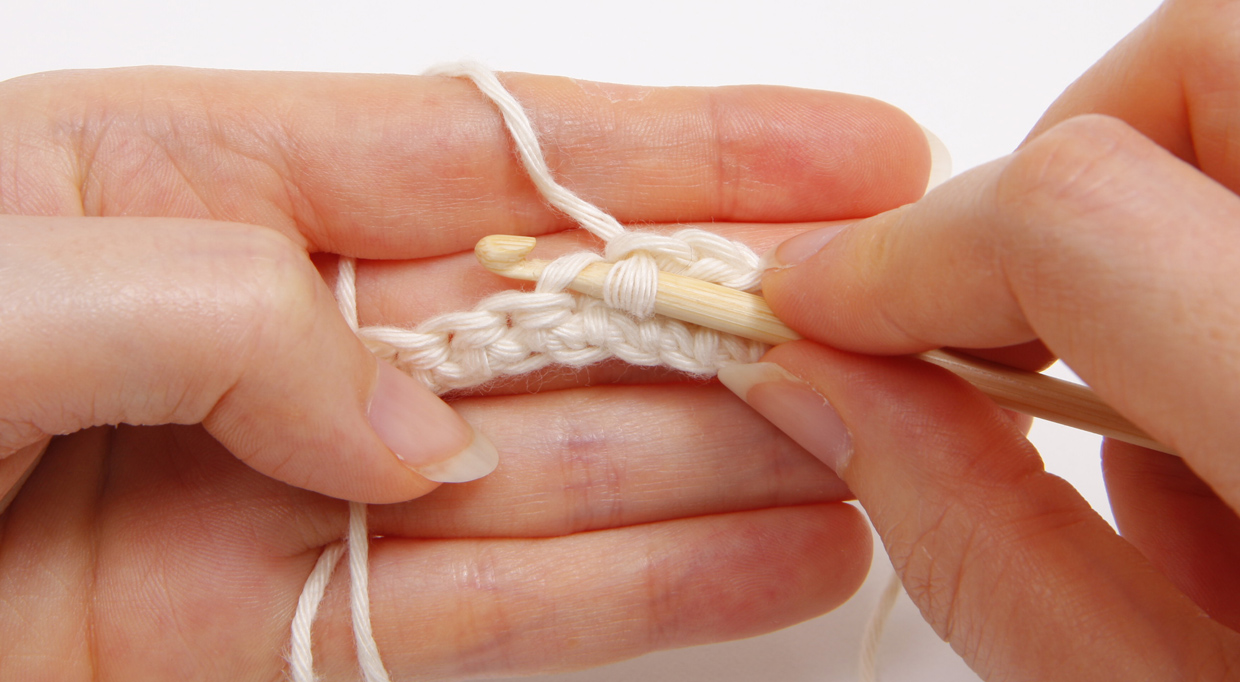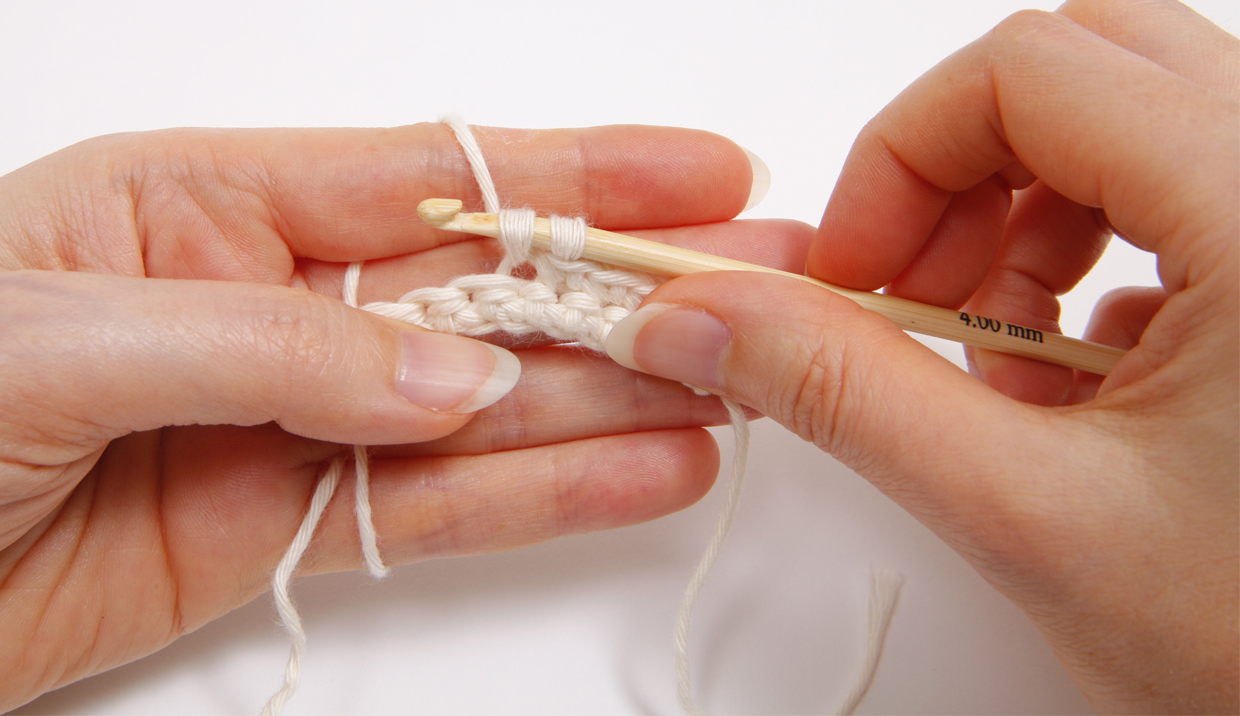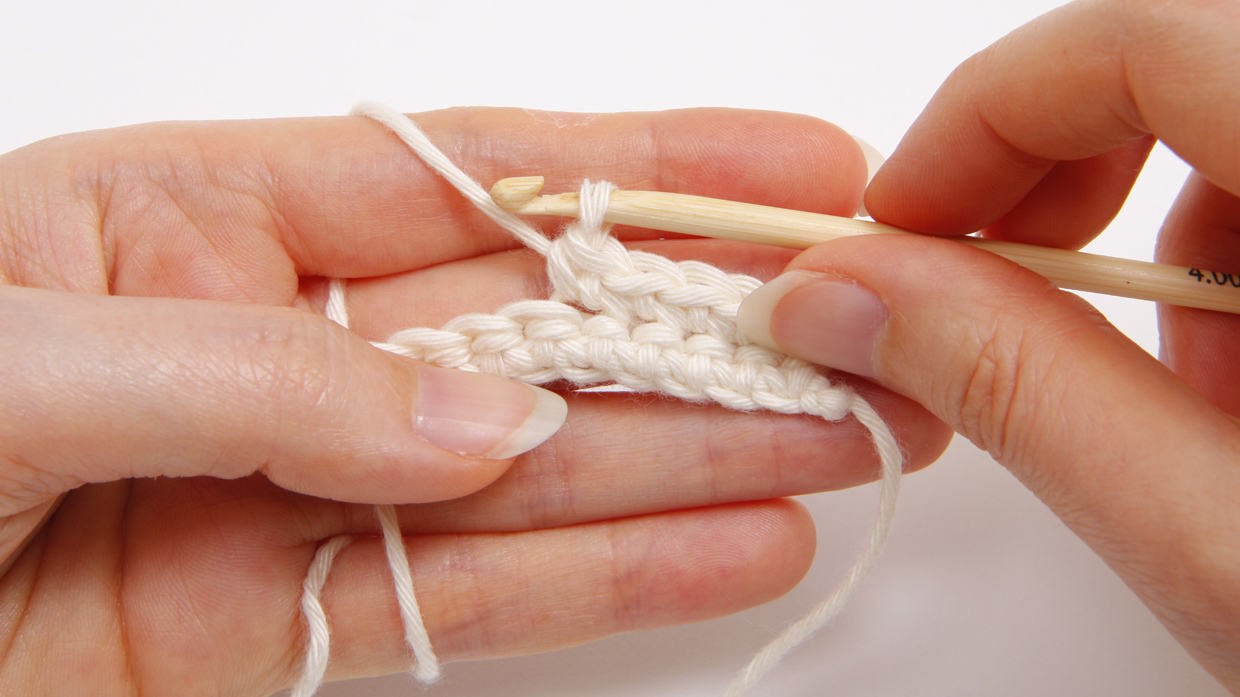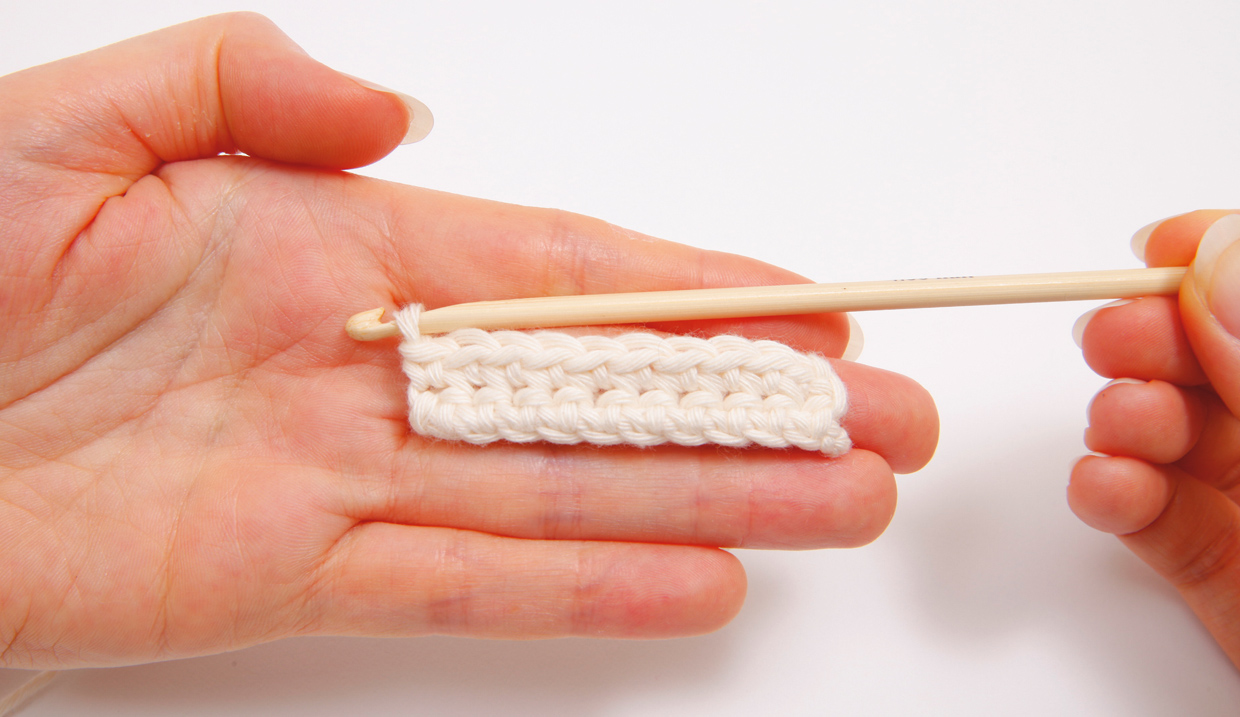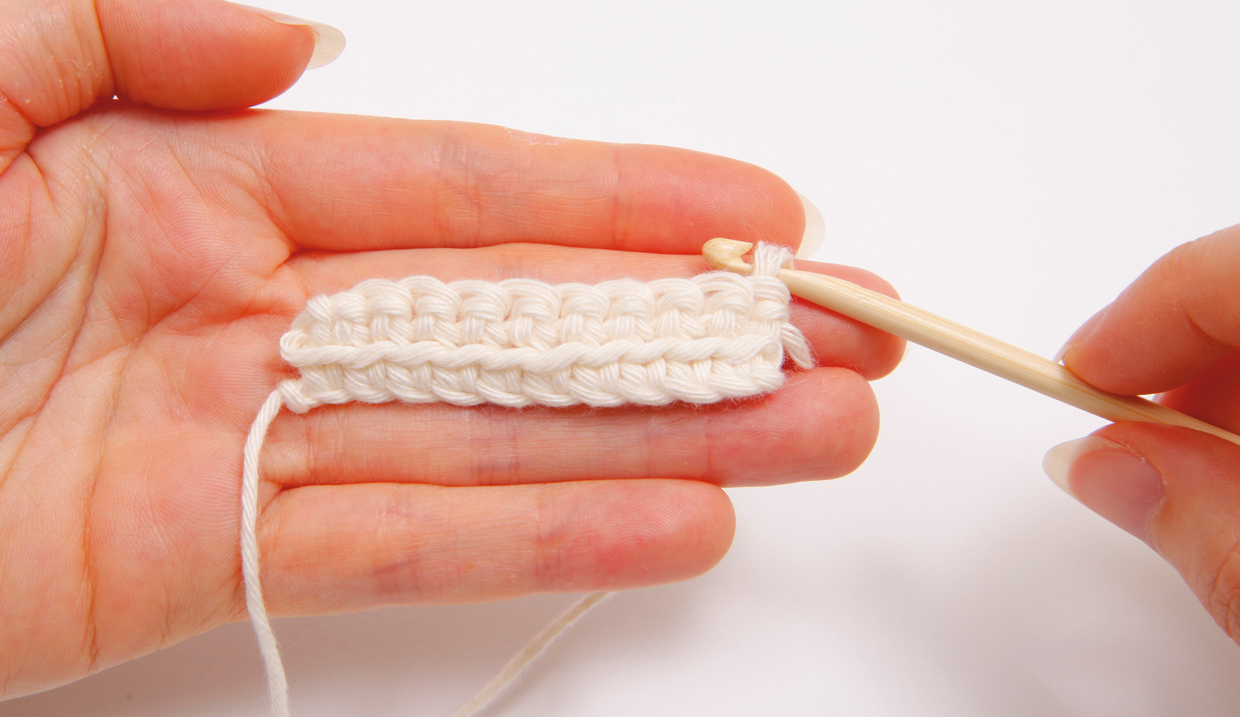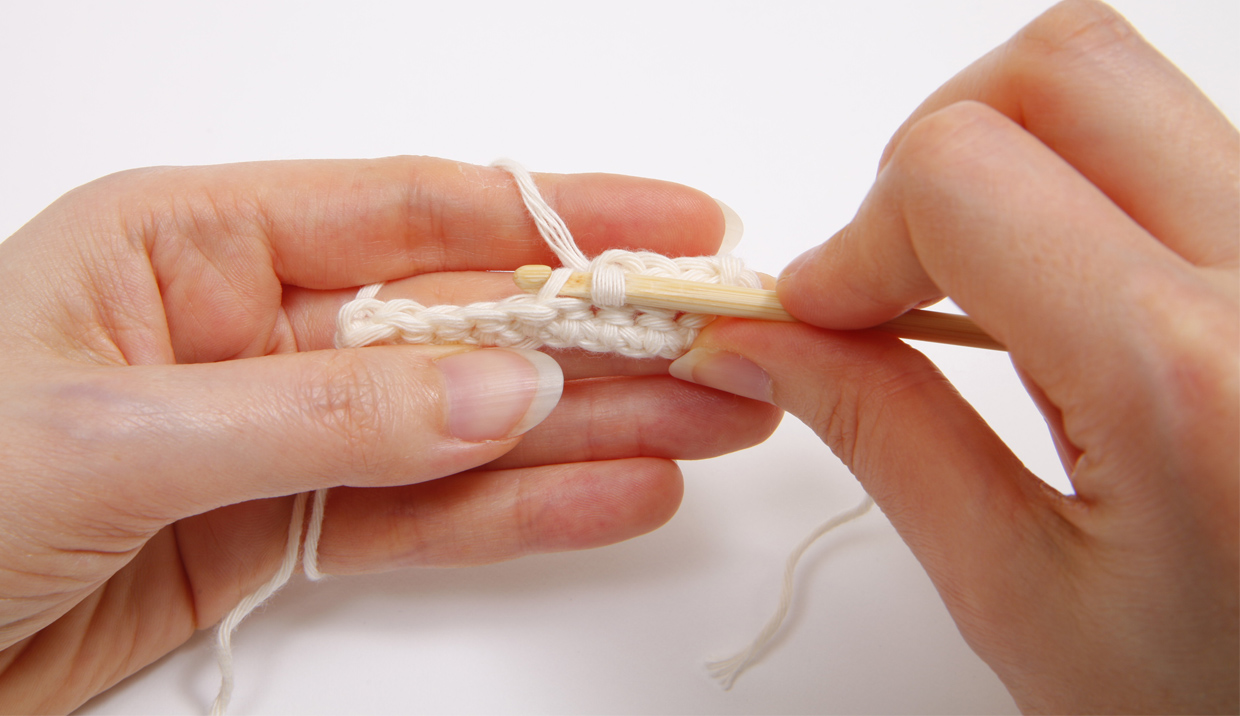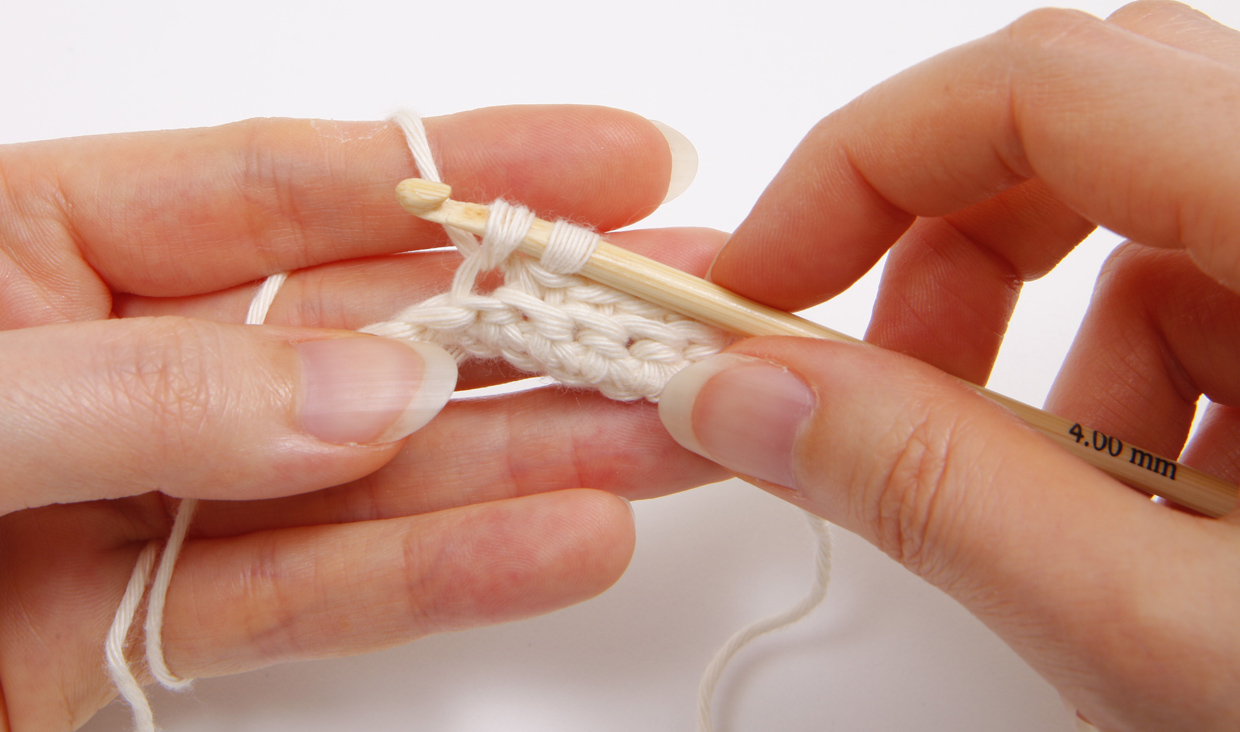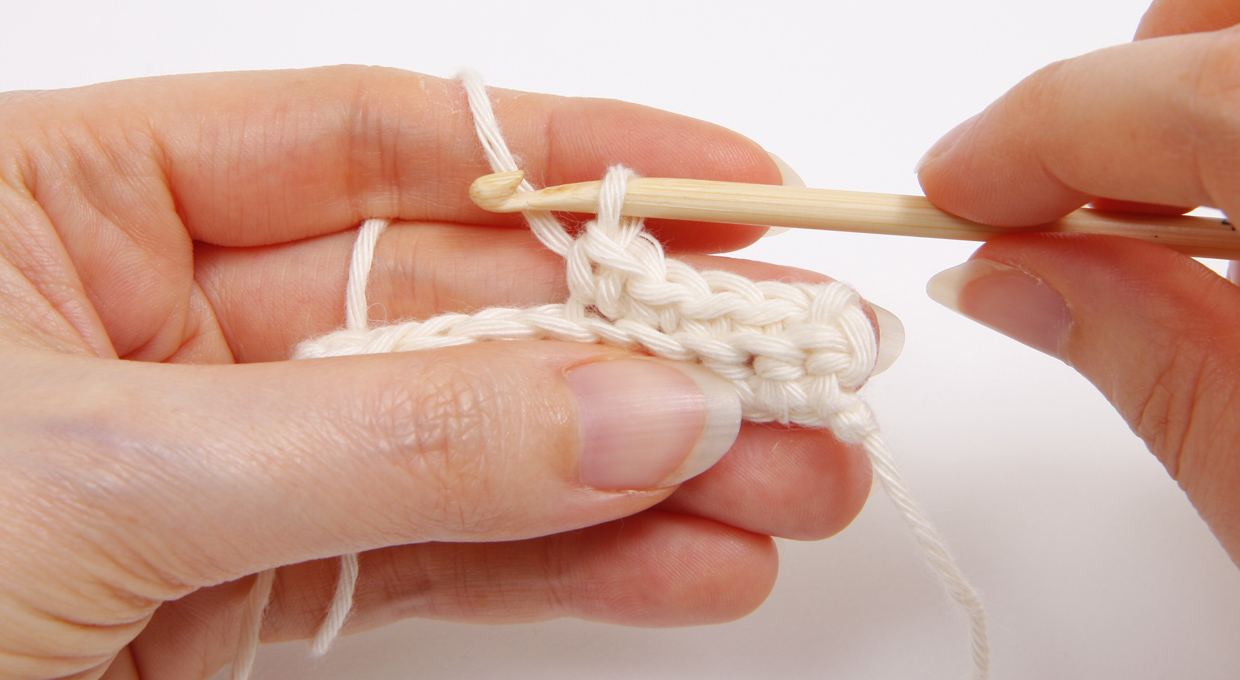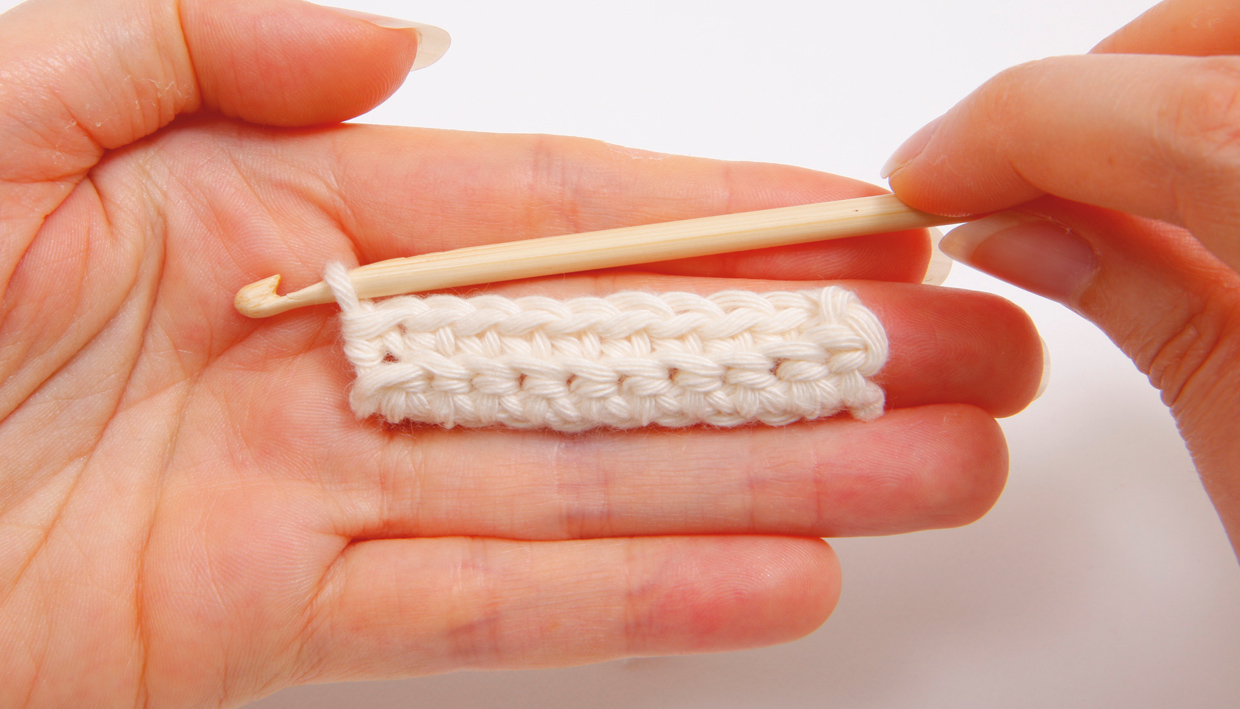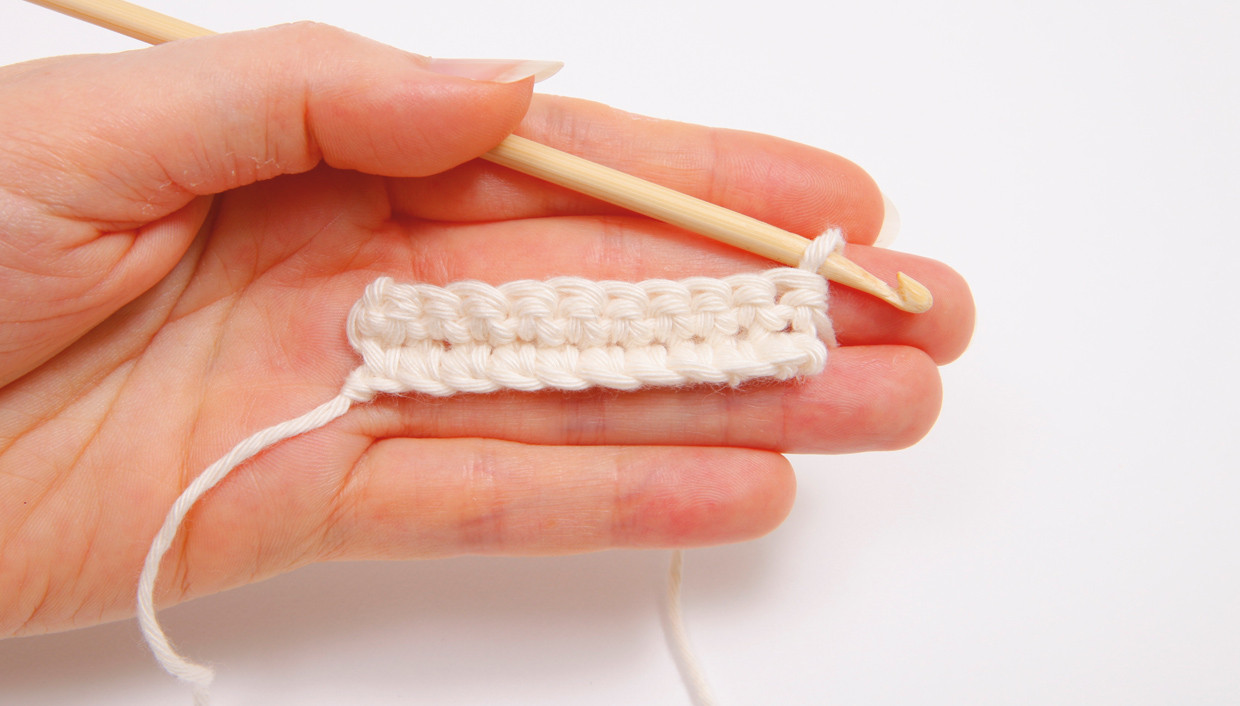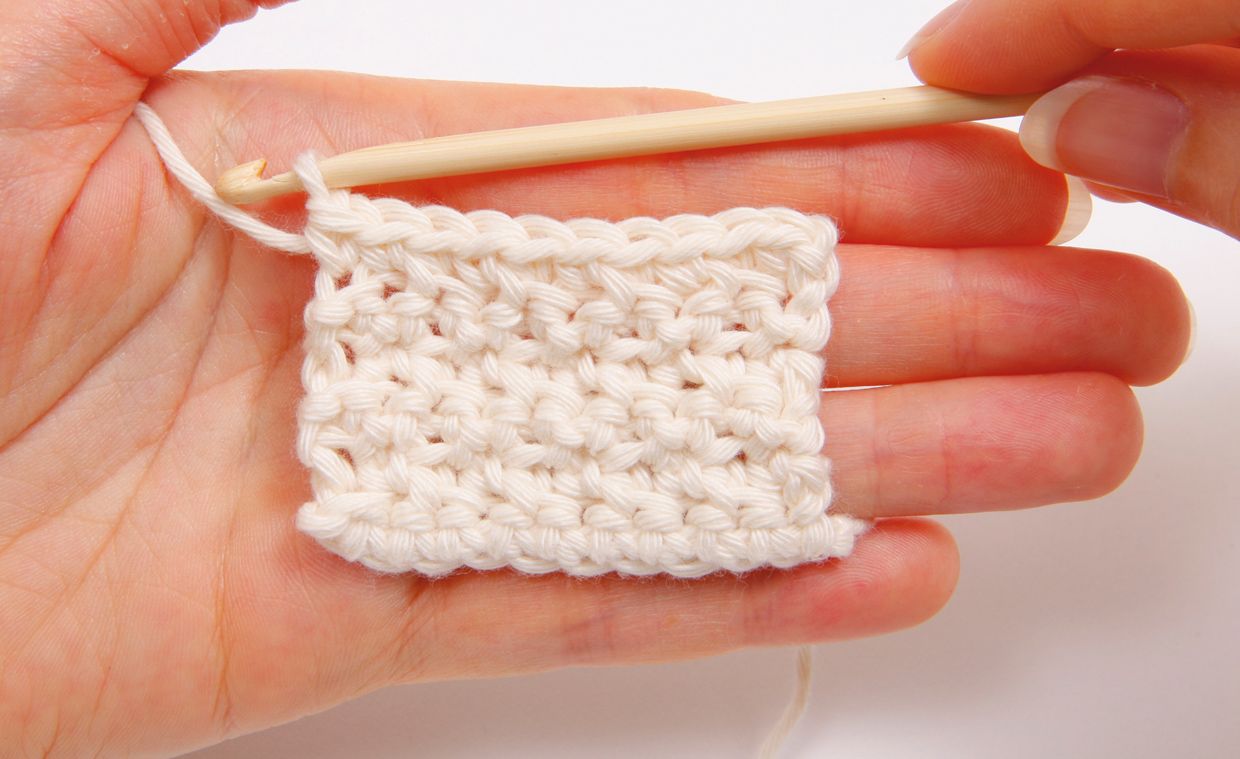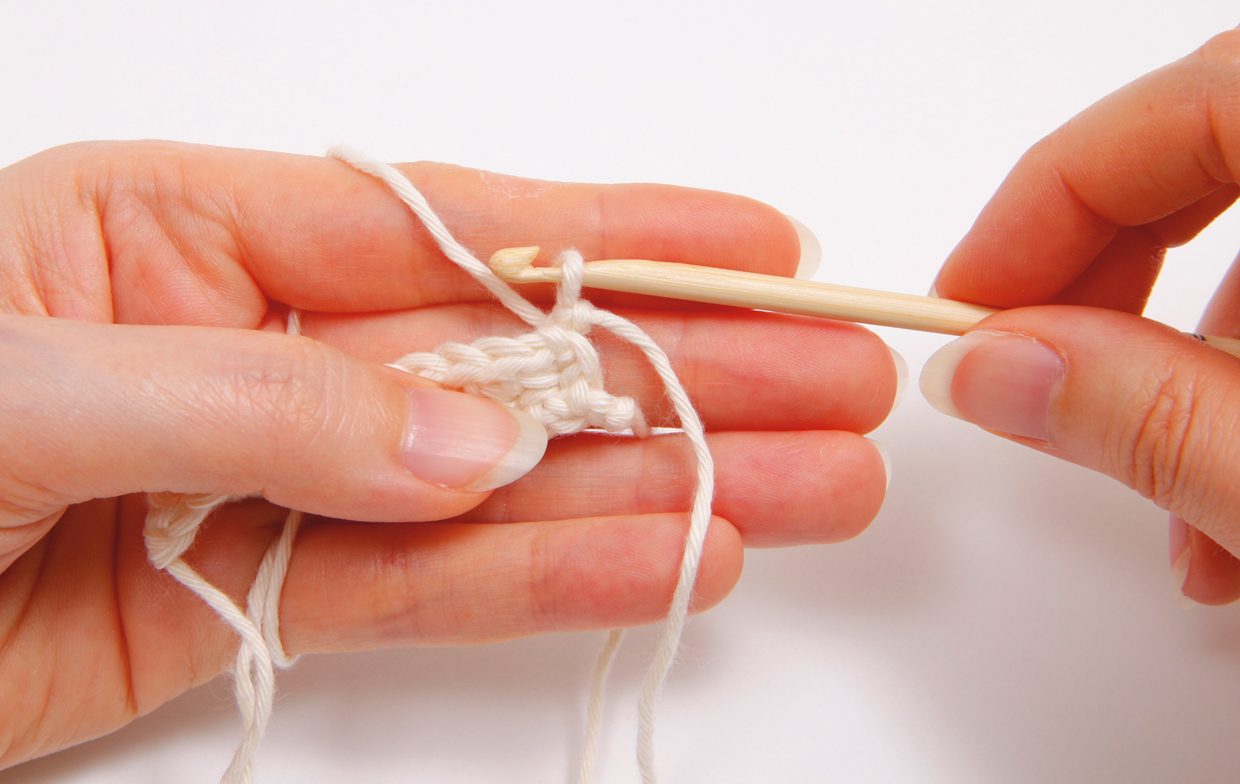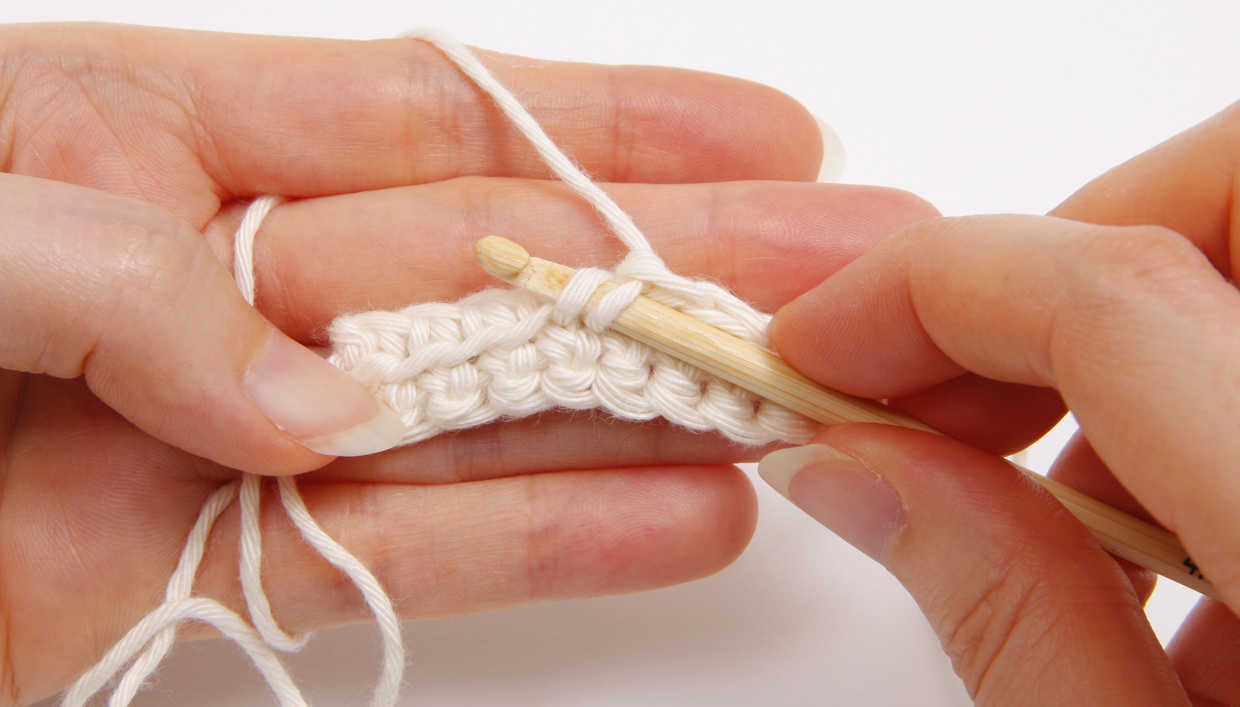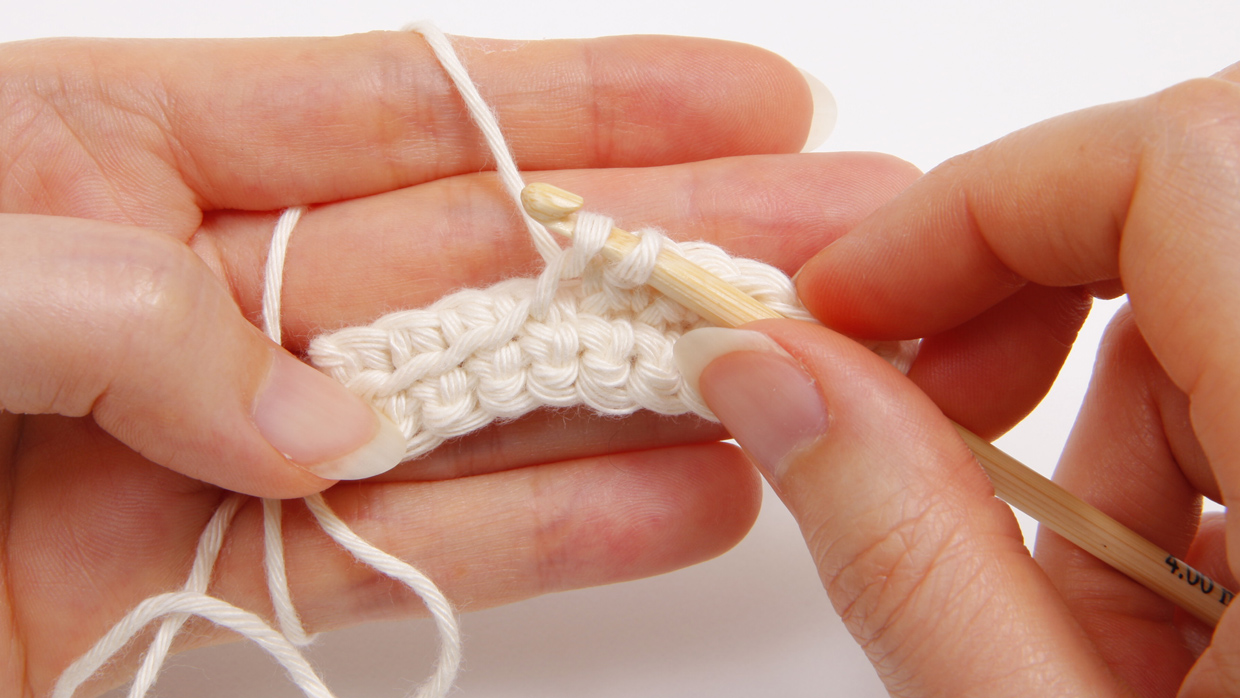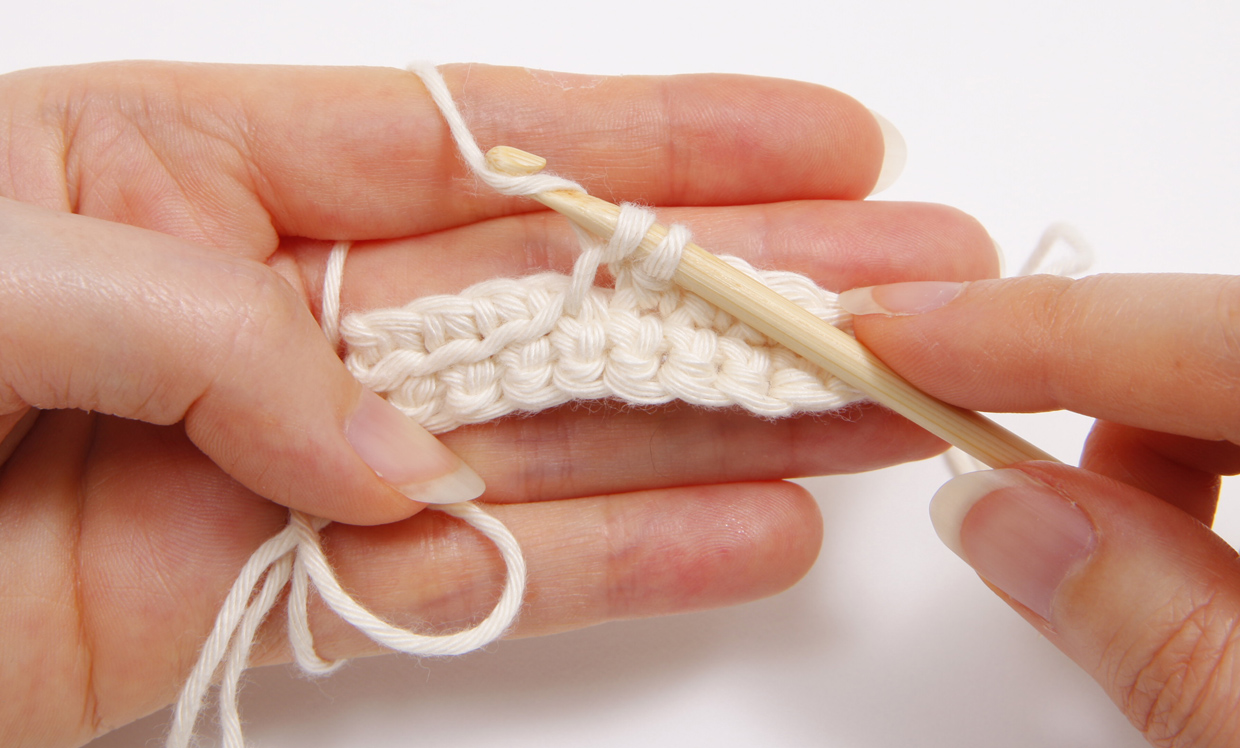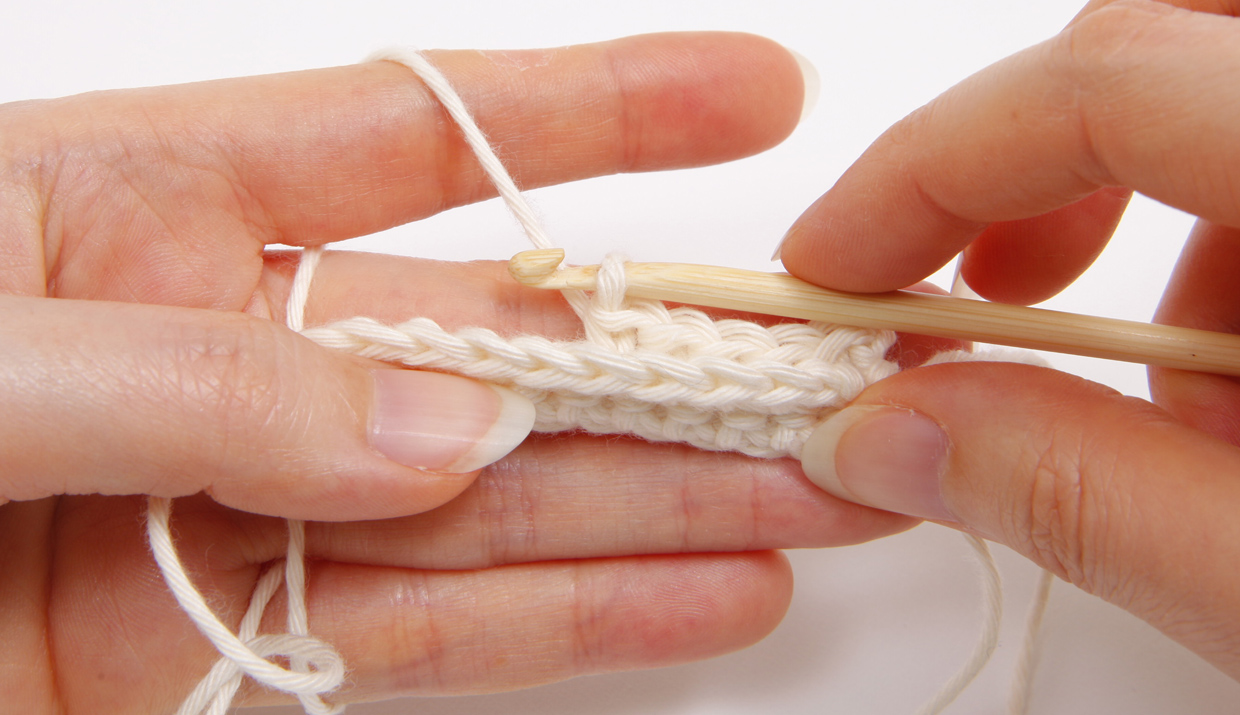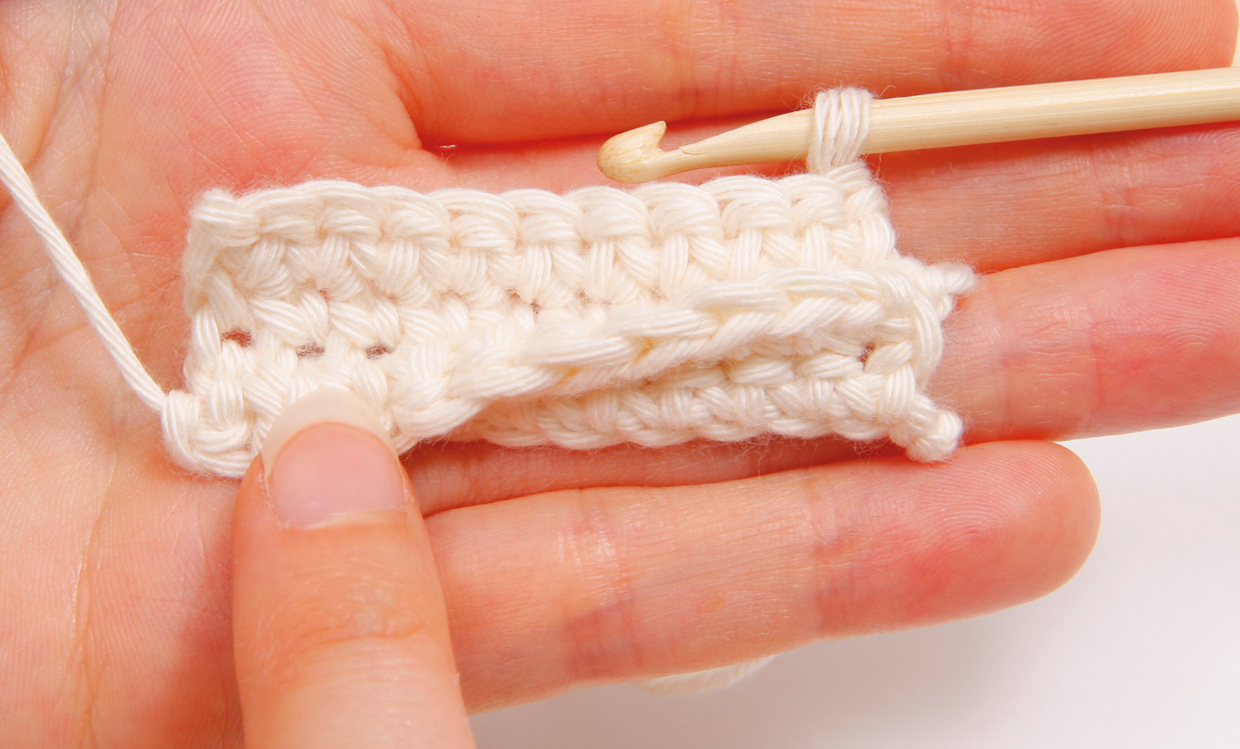When you first learn to crochet, you’re told over and over again to insert your hook under both loops of the stitch on the row below. But did you know that you can break this rule and create some fun effects? Stitches worked into the front loop or back loop only can create interesting textures, or be used to leave a stitch loop available for another layer of stitches.
What effects can I create with front loop and back loop stitches?
You can crochet touchable texture or go three-dimensional!
You can work any stitch into the back loop or front loop only of the stitch on the previous row. We’ll show you how to use combinations of these stitches to create different textures in your crochet fabric.
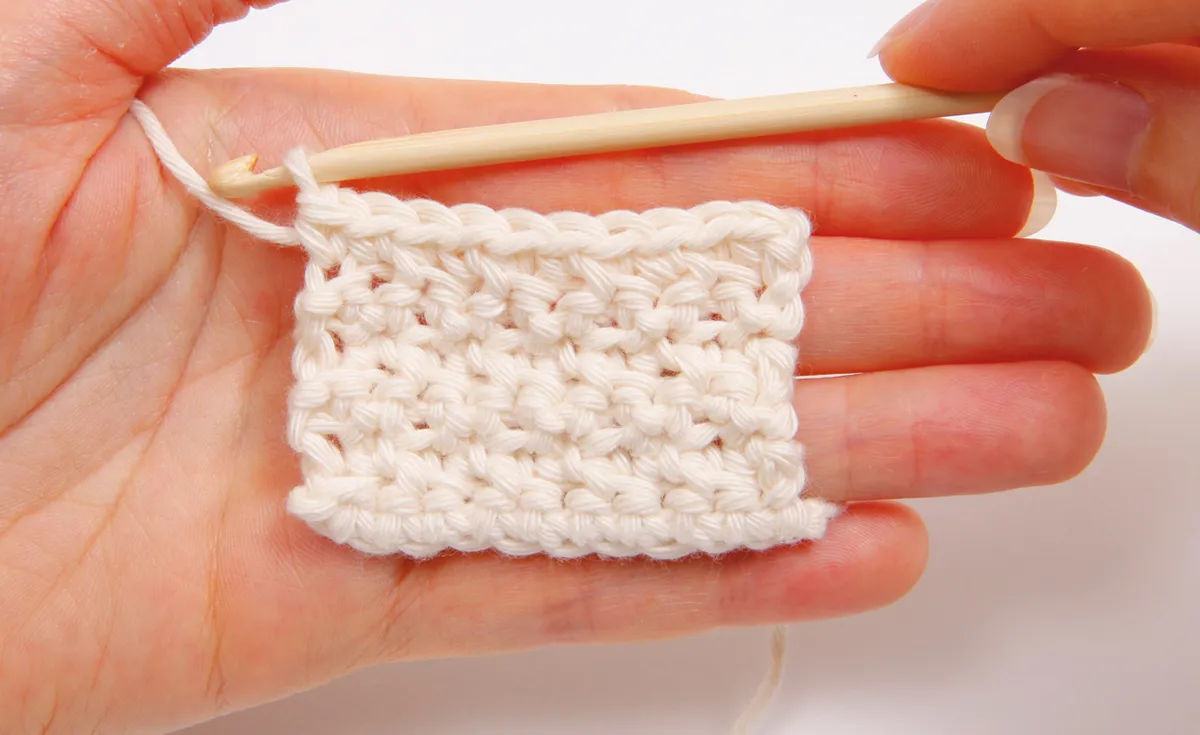
By working a row of stitches into the front loop only, you’ll leave the back loop free for a new row of stitches, worked into the back loop only. The result is a layered three-dimensional effect.
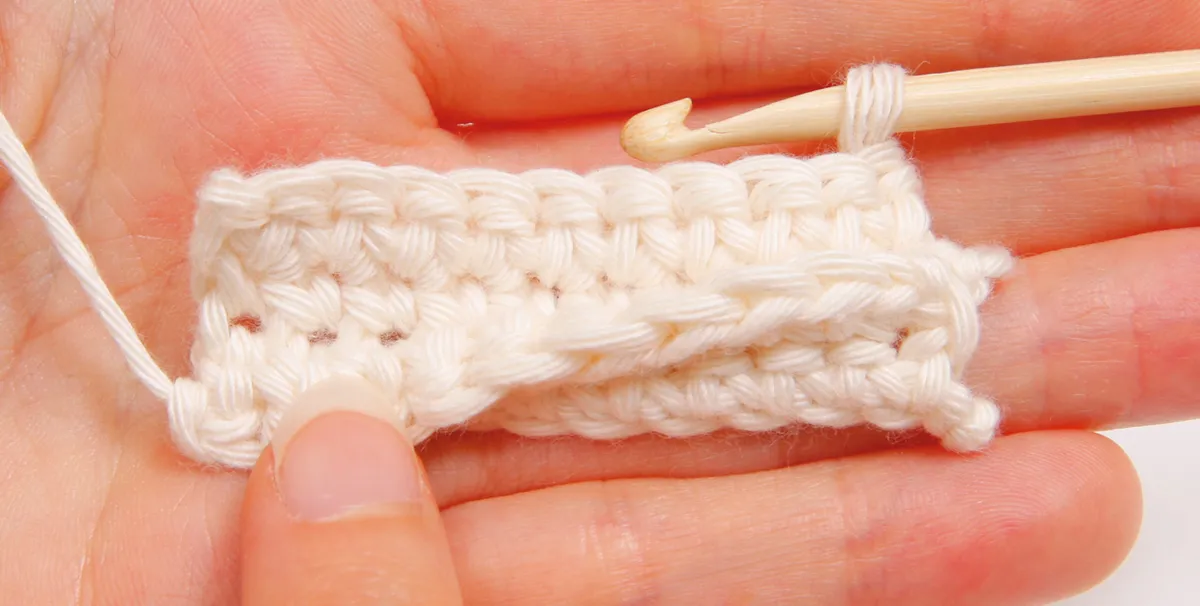
What are the front and back loops in crochet?
Before you learn how to crochet in the front and back loops, you need to know which parts of the stitch you're looking for! Start here for all you need to know about front loop crochet and back loop crochet.
In most standard crochet patterns, the stitches are usually worked into both loops of the stitch on the row below. This means that you insert the hook under both loops of the stitch on the row below and then work your stitches.
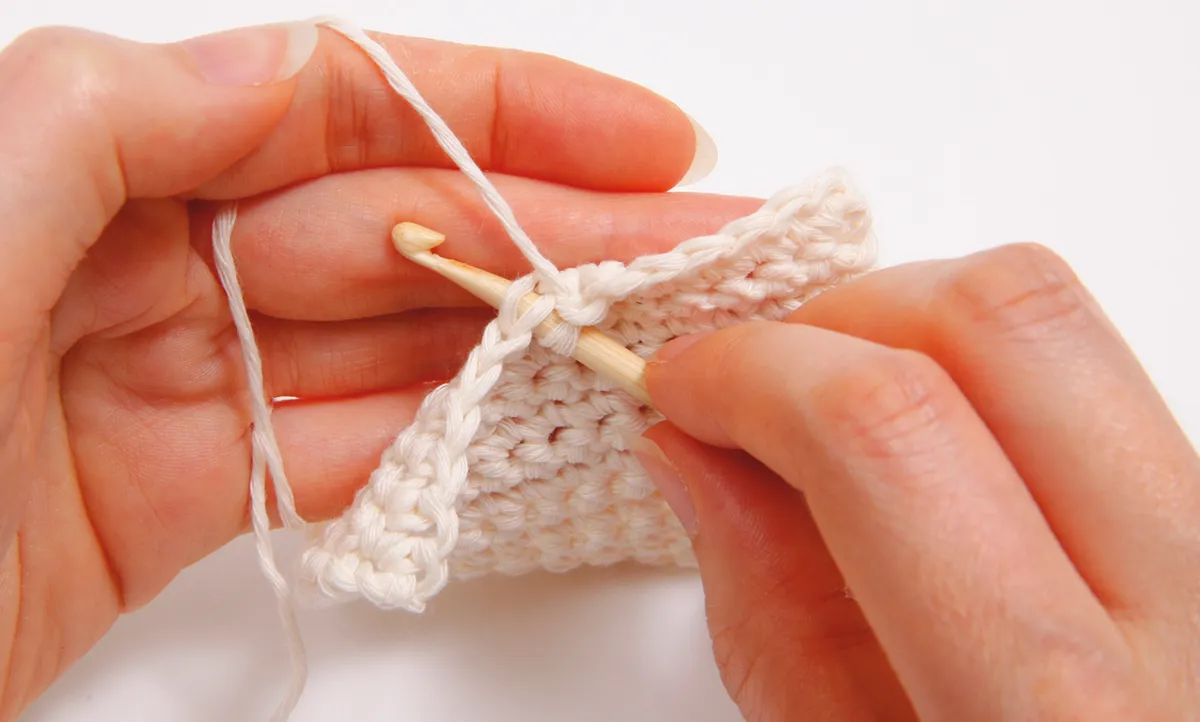
When you first learned to crochet, you may have accidentally inserted the hook under just one of these loops. Although you may have been told that this is wrong at the time, you can use this alternative method of working stitches to create textured effects.
First things first, what are the front loops and back loops in crochet? Take any piece of crochet fabric that you might have in progress and take a look at the v-shaped loop at the top of one stitch. Make sure you have the fabric orientated so that the side you’re working on is facing you. The front loop in crochet will be the single strand of the v-shaped loop that is closest to you. The back loop will be the other strand that’s farthest away from you.
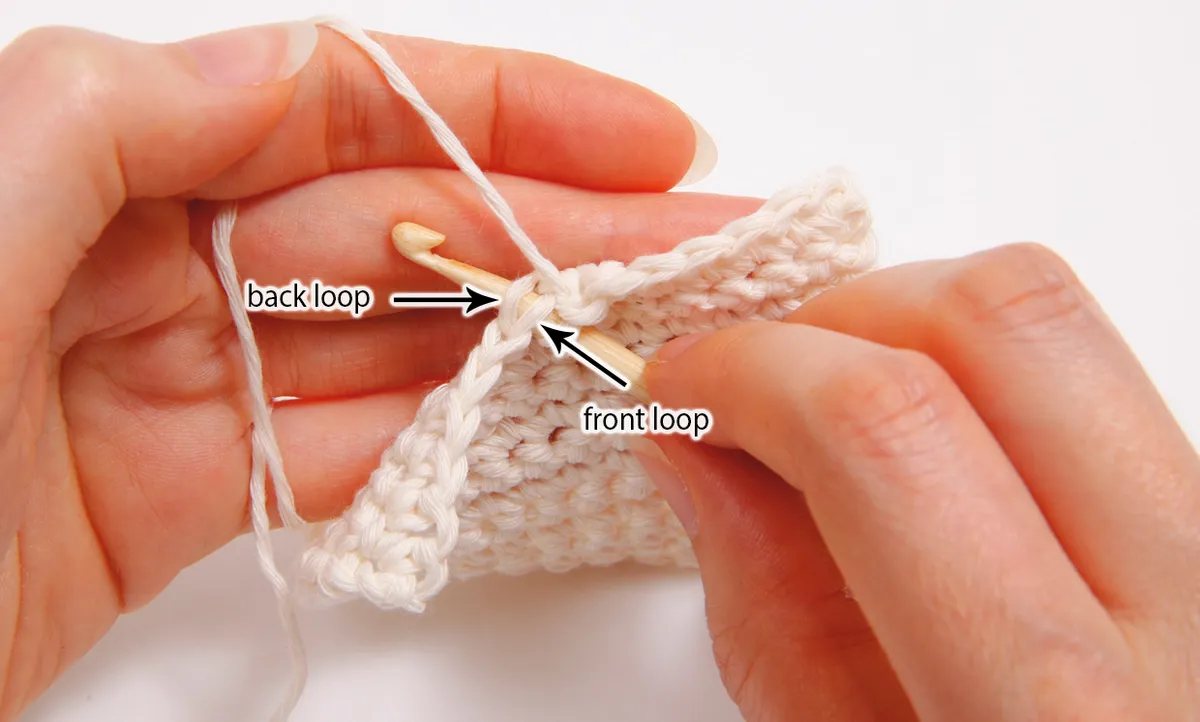
If you worked a row into just the front loops, when you turn the fabric at the end of the row, what were the empty/unworked back loops will now be called the front loops.
This can be a little confusing, but just remember to have the side of the fabric you’re working on facing you before you label the front loops and back loops. You might find it helpful to insert a stitch marker onto one side of your crochet fabric to help remind you which is the front and back (or right and wrong sides as they're known in crochet).
If you’re asked to work stitches into the front loop, insert your hook from front to back, under just the front strand of the top of the stitch on the row below
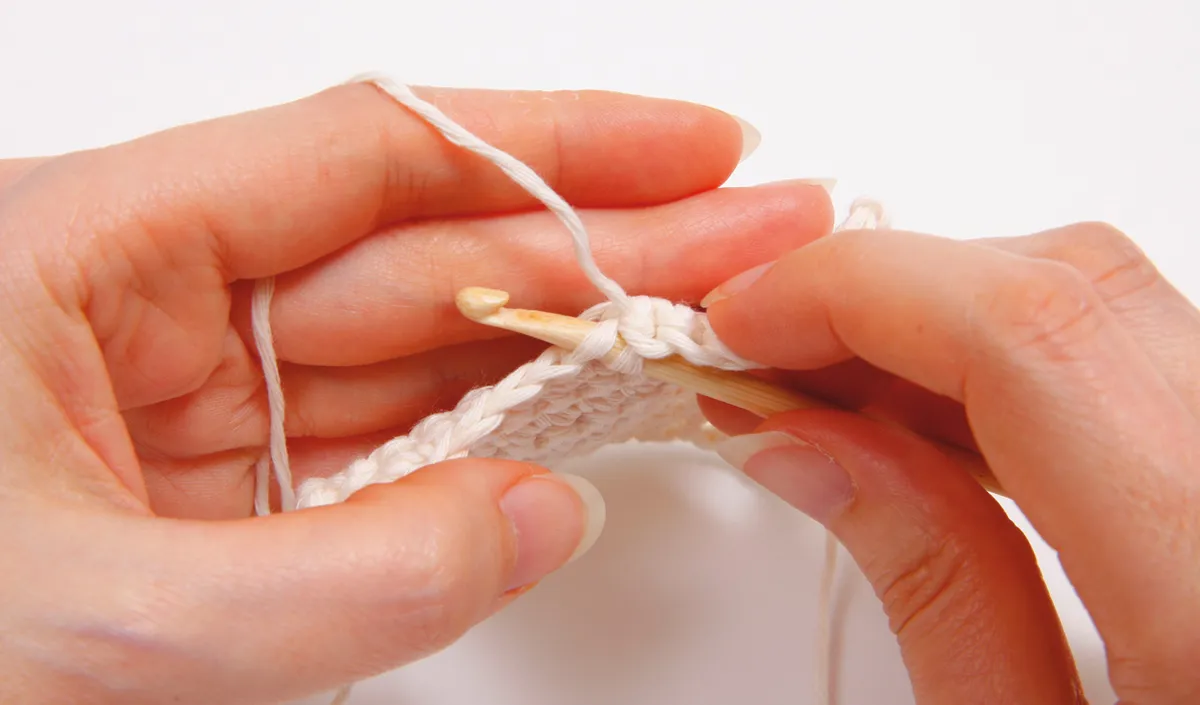
To work into the back loop of the stitch, insert your hook from front to back, under just the back strand of the stitch on the row below
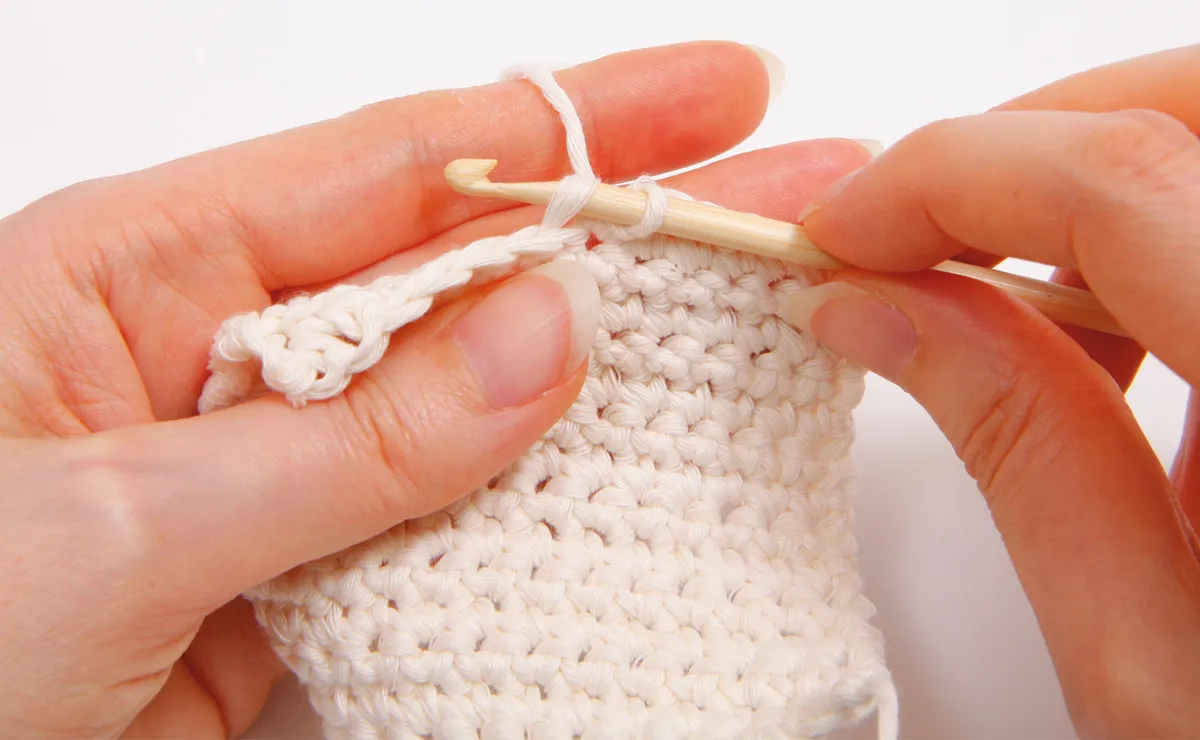
Then you can work stitches as usual. We’ll explain how next.
How do I crochet into the front loop?
To practise working into the front loop in crochet, make a row of double crochet – try 10 stitches. So make a slipknot, place your yarn on your hook and ch11. Turn and work a dc into the second chain from the hook and each chain to the end.
Turn and on the second row, work all the dc stitches into the front loop only by doing the following.
